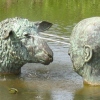|
theHUNGERian posted:I feel you. Somebody should really make a 200 mm 1x macro. Nikon do! I just found out about it recently, seems like a perfect butterfly lens. https://www.nikon.co.uk/en_GB/product/nikkor-lenses/auto-focus-lenses/fx/single-focal-length/af-micro-nikkor-200mm-f-4d-if-ed I'm hoping Laowa make a knock off Canon fit version jarlywarly fucked around with this message at 18:15 on Sep 9, 2019 |
|
|
|

|
| # ? May 16, 2024 11:10 |
|
theHUNGERian posted:I feel you. Somebody should really make a 200 mm 1x macro. RIP Minolta 
|
|
|
|
jarlywarly posted:Nikon do! I just found out about it recently, seems like a perfect butterfly lens. https://www.usa.canon.com/internet/portal/us/home/products/details/lenses/ef/macro/ef-180mm-f-3-5l-macro-usm
|
|
|
|
Canon has a 180mm macro. Or try extension tubes?
|
|
|
|
Base Emitter posted:Canon has a 180mm macro. Or try extension tubes? Extension tubes will only increase the magnification while reducing the working distance, so that's not what i want. I've thought about the CaNikons. Anybody have any experience with putting either on a Sony A7R3 body? I absolutely do not want to trade off autofocus.
|
|
|
|

|
|
|
|
theHUNGERian posted:Extension tubes will only increase the magnification while reducing the working distance, so that's not what i want. From what I read the AF gets worse the longer the lens when you adapt Canon to Sony.
|
|
|
|
jarlywarly posted:From what I read the AF gets worse the longer the lens when you adapt Canon to Sony.  Well, I'm happy I chose to get a rental (Canon 180 mm macro), to try it out first.
|
|
|
|
Starting to try more focus stacking and I feel like no matter whether you do it in camera or in photoshop you're still going to get weird artifacts if you look closely enough, but for the most part as long as you're not pixel peeping it looks alright.   bonus sooc macro dong 
|
|
|
|
Atlatl posted:Starting to try more focus stacking and I feel like no matter whether you do it in camera or in photoshop you're still going to get weird artifacts if you look closely enough, but for the most part as long as you're not pixel peeping it looks alright. Helicon Focus is good for stacking.
|
|
|
|
jarlywarly posted:From what I read the AF gets worse the longer the lens when you adapt Canon to Sony. The AF is already hilariously slow on the Canon 180. I almost never use mine, it's really heavy and I don't need the long working distance.
|
|
|
|
Bubbacub posted:The AF is already hilariously slow on the Canon 180. I almost never use mine, it's really heavy and I don't need the long working distance. Yeah I read the same when I was looking into longer macro lenses.
|
|
|
|
Bubbacub posted:The AF is already hilariously slow on the Canon 180. I almost never use mine, it's really heavy and I don't need the long working distance. I have read mixed reviews on this. But hopefully my usual method of 'focus when far away, use AF-C as I slowly approach subject' will not be too demanding on the lens' AF. And if it's poo poo, I just keep using my existing 90 mm Sony macro. But it sure would be nice if I could replace my 90 mm (macro) and my 180 mm (non-macro) with a single 180 mm macro lens. I really don't use the 90 mm for anything else, so the focal length will not be missed at all. The rental 180 mm macro will be here tomorrow, and the adapter is already here. I'll report back.
|
|
|
|
I've just ordered the Laowa 100mm, but it's on back-back order with the manufacturer 
|
|
|
|
theHUNGERian posted:I have read mixed reviews on this. But hopefully my usual method of 'focus when far away, use AF-C as I slowly approach subject' will not be too demanding on the lens' AF. And if it's poo poo, I just keep using my existing 90 mm Sony macro. But it sure would be nice if I could replace my 90 mm (macro) and my 180 mm (non-macro) with a single 180 mm macro lens. I really don't use the 90 mm for anything else, so the focal length will not be missed at all. Day 1 of testing is over. I used a rented Canon 180 mm macro on the Sony A7R3 (v3.01) using a Metabones gen. V adapter (v0.62). While AF-C is an absolute train wreck in both Green and Advanced mode, AF-S works well enough in both modes. Manual pre-focusing helps immensely, and fortunately Canon implemented this feature perfectly. While AF-C with the 90 mm Sony macro is a smoother experience, I have to get much closer to the subject to reach 1:1, thus scaring off critters more quickly. While I would love to see AF-C with the Sony/Canon combo, AF-S will work just fine if I work on my technique a bit (wait for, rather than 'hunt', subjects). I left the adapter on Green mode on Day 1, and some hand held shots are below.  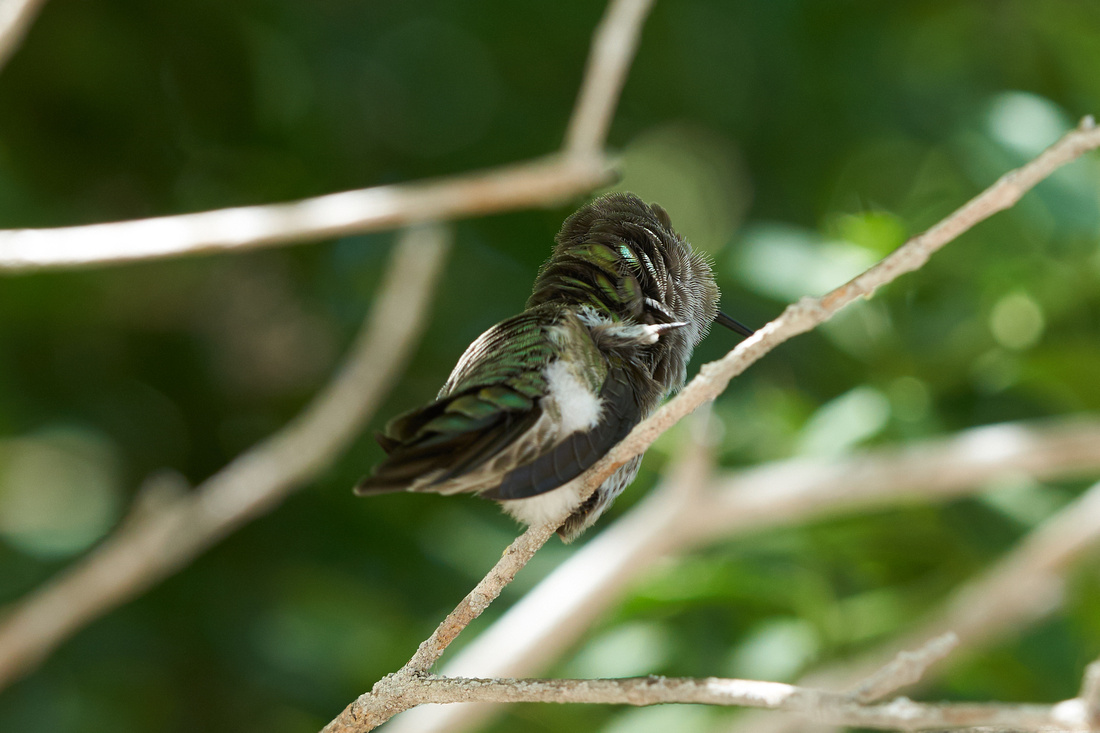 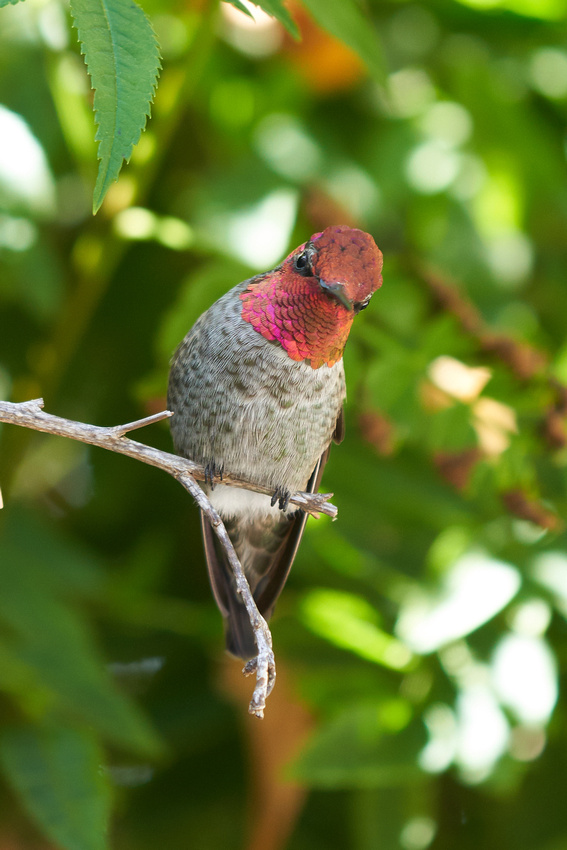 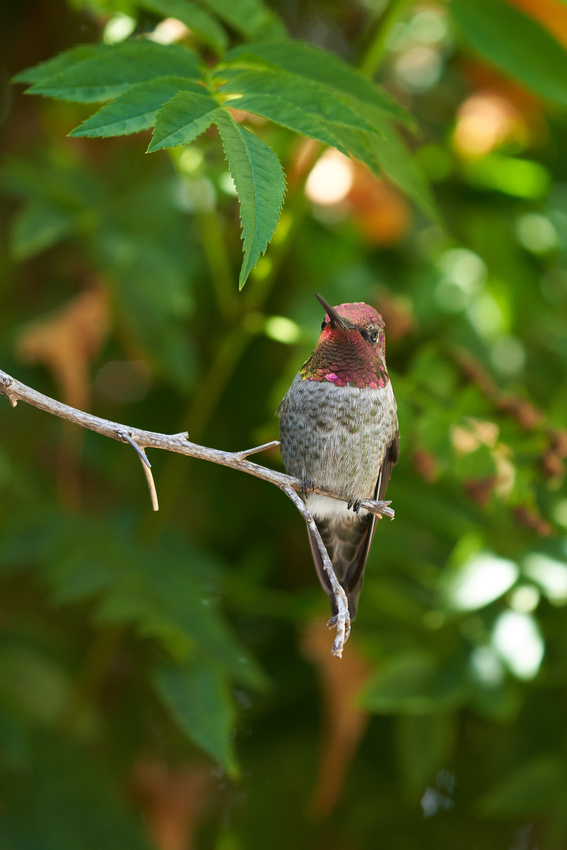  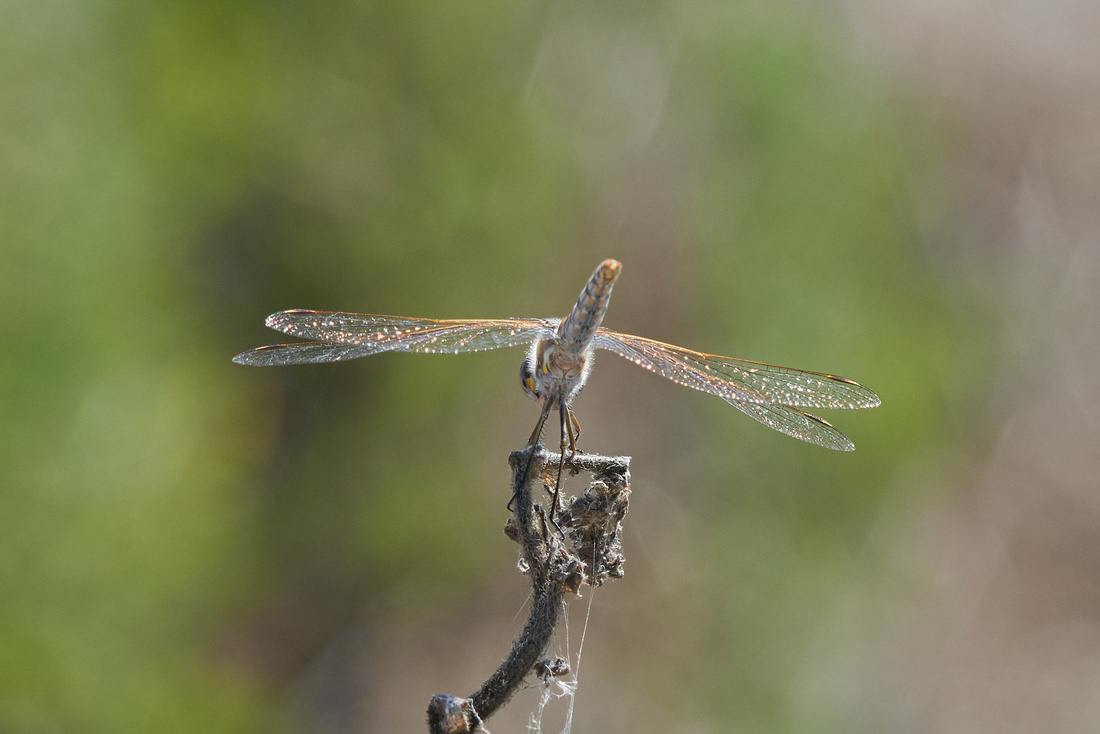 
|
|
|
|
It's autumn and in macro land that means stacked shots of wild mushrooms! Fairy Inkcap by Aves Lux, on Flickr
|
|
|
|

|
|
|
|
The Ricoh GR is great for spur-of-the-moment macro(ish) shots R0020819 by Cody P, on Flickr R0020819 by Cody P, on Flickr R0020821 by Cody P, on Flickr R0020821 by Cody P, on Flickr
|
|
|
|
really lovely, man hummingbirds must be so much fun to photograph!
|
|
|
|
jarlywarly posted:really lovely, man hummingbirds must be so much fun to photograph! Thanks. I enjoy the dive bombing exercises they perform on me. But the keeper rate is really low because they are so fast. I am trying to get a picture of their wings against the bright sky (https://mymodernmet.com/christian-spencer-rainbow-hummingbird/).
|
|
|
|
Looks like you's want and EVF for those backlit humming birds lest you accidentally blind yourself. I generally find for most photos worth showing the keeper rate is low and showing too many from a sequence can water down an image a little psychologically.
|
|
|
|
Time to rez this thread again... what's the preferred macro lens with IS for under $500 on a canon platform these days? Hoping to make an upgrade before a trip to Costa Rica in January, my current macro lens is an older 100mm without IS that I use on a tripod a lot. It's great, but I'd like to be more confident while hiking without having to use tripod. For that matter, anyone have suggestions for travel-friendly diffuser options?
|
|
|
|
With IS probably the Canon 100 f/2.8 L if you are shooting with high power flash for shake reduction IS is less important I've been liking the new Laowa 100mm 1x to 2x for flexibility it's manual focus and no IS though which doesn't really bother me when I shoot though I understand this is a personal choice.
|
|
|
|
jarlywarly posted:With IS probably the Canon 100 f/2.8 L if you are shooting with high power flash for shake reduction IS is less important I've been liking the new Laowa 100mm 1x to 2x for flexibility it's manual focus and no IS though which doesn't really bother me when I shoot though I understand this is a personal choice. I use a flash with diffuser most of the time, but a lot of the time I'm handheld shooting on hikes and notice the lack of IS depending on what I'm doing. I might just grab a 100mm L but I'll check out the Laowa too.
|
|
|
|
Fingers McLongDong posted:I use a flash with diffuser most of the time, but a lot of the time I'm handheld shooting on hikes and notice the lack of IS depending on what I'm doing. I might just grab a 100mm L but I'll check out the Laowa too. Do you know what flash on time you generally have? 1/4000+ is preferred.
|
|
|
|
jarlywarly posted:Do you know what flash on time you generally have? 1/4000+ is preferred. I don't, actually. It's a Canon Speedlite 580ex II, if that helps. I am admittedly not very good at adjusting settings on the flash yet, I haven't taken the time to teach myself everything I should have. I've had some issues getting overexposure as a result in some of my shots.
|
|
|
|
Fingers McLongDong posted:I use a flash with diffuser most of the time, but a lot of the time I'm handheld shooting on hikes and notice the lack of IS depending on what I'm doing. I might just grab a 100mm L but I'll check out the Laowa too. Fingers McLongDong posted:I don't, actually. It's a Canon Speedlite 580ex II, if that helps. I am admittedly not very good at adjusting settings on the flash yet, I haven't taken the time to teach myself everything I should have. I've had some issues getting overexposure as a result in some of my shots. These posts sound like you are still learning the ropes, so I'll give you the advice I'd give someone learning how to use their camera to take good macro shots. I apologize if I'm misreading it and you have more advanced skills and are really trying to deliberately blend natural light and flash exposures for creative purposes. I've owned the canon 100 f/2.8, and currently own the L lens. The L lens (or with IS) will generally not help you with flash macro if you are using your flash correctly. Set your camera to manual exposure, F/16, 1/120s, ISO 200. Set your flash to ETTL. Done. No more blurry pictures. You will get a shot purely lit by flash, and you can focus on adjusting your diffuser. If you shoot with your camera with the flash turned off, and you see any light at all, then you are trying to blend natural light with flash. That can be done and look great, and IS can help with it, but it's certainly harder and more advanced than a pure natural light exposure, or pure flash exposure. But to make either one work you should really have your camera in manual. If you are shooting with the same diffuser each shot, and the subject is always at 1:1 (minimum distance), then you can also set your flash to manual mode as well. Just make test shots of your fingertip until the flash power is right, and then never touch it again unless you mess with your diffuser. This works because with a diffuser, and with your subject at the same spot every time, you have a mini-photo-studio going, and the same amount of light is good every time. This helps with macro because your flash recycles much faster (no pre-flash for the ETTL to meter from), and you also don't scare the fastest bugs with the pre-flash. You also eliminate errors from your flash ETTL algorithm where it uses more flash on a black subject, and less flash on a white subject. This is how I shoot everything, even with a fancy camera and flash, I just use everything manual (manual focus at the same distance every time, manual exposure, manual flash, and rarely change any settings). You really do eliminate problems shooting that way. Now, if when you say you "shoot handheld," if you mean you shoot WITHOUT a flash, then sure you would benefit from IS. I think you'd be a lot happier hand-holding with a flash though. The flash will freeze motion well enough to conceal any hand shake or subject motion.
|
|
|
|
Graniteman posted:These posts sound like you are still learning the ropes, so I'll give you the advice I'd give someone learning how to use their camera to take good macro shots. I apologize if I'm misreading it and you have more advanced skills and are really trying to deliberately blend natural light and flash exposures for creative purposes. I'd definitely say I'm still learning. I was getting into it a lot more some months back, and then got really busy with life stuff between work and buying a house, and haven't been able to do any shooting for a couple months but things are slowing down a little so I should be able to start practicing more. I'm still learning about stuff like the sunny 16 and all that and I learn better by going out and doing it. I've been doing some shooting with the flash, and some without, depending on the situation. I've either been doing some backyard shooting for practice, or taking the camera around with me on hikes where lighting is not always a sure thing. I'll start tweaking my flash settings when I get a chance in the evenings using the method you mentioned. With winter rolling around I wanted to try some more indoor controlled setting shots so that'll be helpful. I've gotten some shots I really liked with decent lighting while on hikes but it's frustrating having it be so dependent on the sun so I really want to get this flash thing down. I think I was thinking a lot about getting and L lens with IS so I could have the option, but I want to get good with the equipment I have as well. Thanks for the advice!
|
|
|
|
Graniteman posted:These posts sound like you are still learning the ropes, so I'll give you the advice I'd give someone learning how to use their camera to take good macro shots. I apologize if I'm misreading it and you have more advanced skills and are really trying to deliberately blend natural light and flash exposures for creative purposes. This guy knows his poo poo.
|
|
|
|
Graniteman posted:... Flash has always intimidated me, so I never even tried it on macro. Thanks for writing this up.
|
|
|
|
http://edocfile.info/macroshooting/The_need_for_Flash.htm This is the guide that I started from, it's a bit old but still very relevant.
|
|
|
|
theHUNGERian posted:Flash has always intimidated me, so I never even tried it on macro. Thanks for writing this up. You're welcome. I just love this subject! I have to restrain myself if it ever comes up in conversation. I started out with just a canon 100 f/2.8 with no IS shooting bugs and flowers with no flash. The first time I took a photo with flash I was just loving speechless at how much better it looked. It was SO MUCH SHARPER. I could see every tiny hair on the beetle's body. I still remember the photo 8 years later. I couldn't believe that I took that photo. I mean, it wasn't anywhere near what I shoot today, but adding a flash was a quantum leap over my previous shots. It really hooked me on macro, and it's become my main interest since then. I always try to tell people (and people rarely seem to believe me) but world class macro photography is all about the right use of lighting. It's no different than portrait photography in a studio. Yes you can get GREAT photos of a person in natural light, but you do it by asking them to go stand next to an open window, or turn their head slightly. Bugs don't do that. They are in foliage. You are standing right over them, up very close, blocking a ton of light with your body and lens. You can use a cheap camera body, cheap lens, cheap flash. All manual. No ETTL needed for anything (it actually makes it harder IMO). Spend your money on a powerful manual flash and a bracket, and buy some diffusing media like what was discussed a few pages back here ("roscolux"). If anyone has a budget for bug photography workshops, I learned a TON going to a BugShot workshop about five years ago. They do two per year, one in the continental US, and one at some tropical location where they scout the site, find unique critters, and get permissions to wander around the rain forest (or whatever) at night. They also teach a few hours of classes every day on things like lighting / flash, basic photography stuff (exposure triangle basics), have a workshop where they help you build a diffuser for your flash, entomology lectures (the class is taught by a professor of entomology). I've been to three workshops just because I like the people, and it's fun to be in a group with other people who like this weird subject. Anyway, my point being, people who do field photography of insects use a flash. Period. That's just how you do it. There are certainly cases where you use some natural light in addition, or even purely natural light, but for insects that's really the exception to a pure flash type shooting. jarlywarly posted:http://edocfile.info/macroshooting/The_need_for_Flash.htm How are you liking that AD200 pro rig? Your post here and on the pm forums had me thinking. I spent like an hour yesterday mocking up a lighting rig like yours. I use a 5D III, venus kx-800, mp-e 65 (or 100 L), and a bracket holding my diffusion media, plus a second friction arm holding an optically triggered mini flash for a fill light (three flash heads total). I'm very happy with the quality of light I get and the control I have over light. However, it's very heavy. I actually have tennis elbow really badly from the weight of the camera rig, and it limits my shooting. I switched to a much lighter APS-C mirrorless + prime camera for my non-macro stuff because I couldn't take carrying the bigger camera any more. My point being, I'm highly motivated to look for a way to make my macro rig lighter. Your AD200 setup looked exciting because you move the battery off of the camera (to a belt or something I assume). But when I add up the stuff I need to replace a KX-800 twin flash, it seems to be about a wash. EC200 kit is maybe 100g on the camera, plus a bracket to mount the flash, plus the RF transmitter on the camera hot shoe. It seems like it's about the 450g of the twin flash. Is that accurate? I can't find the flash durations for the KX-800, but I'm guessing your AD200 has faster durations and you can maybe shoot at lower power. Graniteman fucked around with this message at 15:42 on Oct 17, 2019 |
|
|
|
Do you have any kind of rule of thumb or formula for adjusting your settings while using a flash outdoors, given the mixed nature of natural light? Living in the mountains, I might have full on sunlight, total shade, or a mix depending on the day and hike. I really should get a side bracket or something for my flash and a better diffuser. Everything seems to be DIY with everyone doing it differently.
|
|
|
|
Fingers McLongDong posted:Do you have any kind of rule of thumb or formula for adjusting your settings while using a flash outdoors, given the mixed nature of natural light? Living in the mountains, I might have full on sunlight, total shade, or a mix depending on the day and hike. I'm talking about bugs here, but I don't use any natural light for macro unless I'm trying for something really specific. Like 1/200 subjects I'll try to bring in natural light. If you set your camera and flash like I described above, you will have no natural light contribution in your image. So it doesn't matter what is going on around you. If you shoot ~f/16, 1/120s, ISO 200, with the flash turned OFF, you will have a totally black image. Maybe if your subject is in bright sunlight you might see something. But this is what you want. If you set it up this way then it doesn't matter if you have dappled light. The sun is not a factor. Now with that black frame as your starting point, you add in light from your flash. Set it to manual and take a test shot of your hand or something. Turn up the flash power until you get a good exposure of your fingertip. Now don't touch your camera or flash again. Those settings will work for any subject under your light diffuser, at 1:1 macro distance. The subject could be in the shadows, in a black hole, in open shade, on a tree. It could be a black spider or a white butterfly. This works because I'm using a nice diffuser that's always in the same position and distance relative to my subject (that 1:1 focus point). If you back up a little bit you might need some more light. I just bump up my ISO. IMO if you have a modern camera from the last 5 years you could shoot at 400 or even 800 or higher, and it won't be noticeable. Alternately, set your camera to manual like I said and use your flash in auto / ETTL mode. Your flash power will move up and down based on an algorithm, and if you are changing your subject distance all the time (and changing magnification all the time) then this may be easier for you. There will still be a black frame with no light unless the flash fires, and natural light doesn't matter at all. And yes, diffusers and bug macro is like light sabers and jedi. You build your own, custom to your own priorities. Maybe you want softer light, or a more enveloping light, or more insulation from hot spots, or you want more light from the front than the top. I think we all do many iterations of light diffusers. edit: I took this picture with a flash like yours inside a small collapsible softbox. The flash was attached to an ETTL cable. So the camera was in my right hand, and the flash (with soft box attached) was in my left hand. I held the flash above and behind the salamander and got this neat rim light and backlit silhouette. I usually have the diffuser on my camera and use my left hand to stabilize the twig my subject is on, but some of my most creative stuff ends up when I break out of that mold and hold the flash in an unusual position.  Tree salamander Tree salamander
Graniteman fucked around with this message at 17:08 on Oct 17, 2019 |
|
|
|
Flash is the way to go especially if you're close to 1:1. I tend to use natural light mainly for flying shots, or wide angle macro, otherwise nearly always use flash  Jumper by Marc, on Flickr
|
|
|
|
Graniteman posted:You're welcome. Putting your lesson to use, at night. I was already pretty happy that I traded the 90 mm Sony macro for the 180 mm Canon macro, but I never thought I would get decent night time macros. 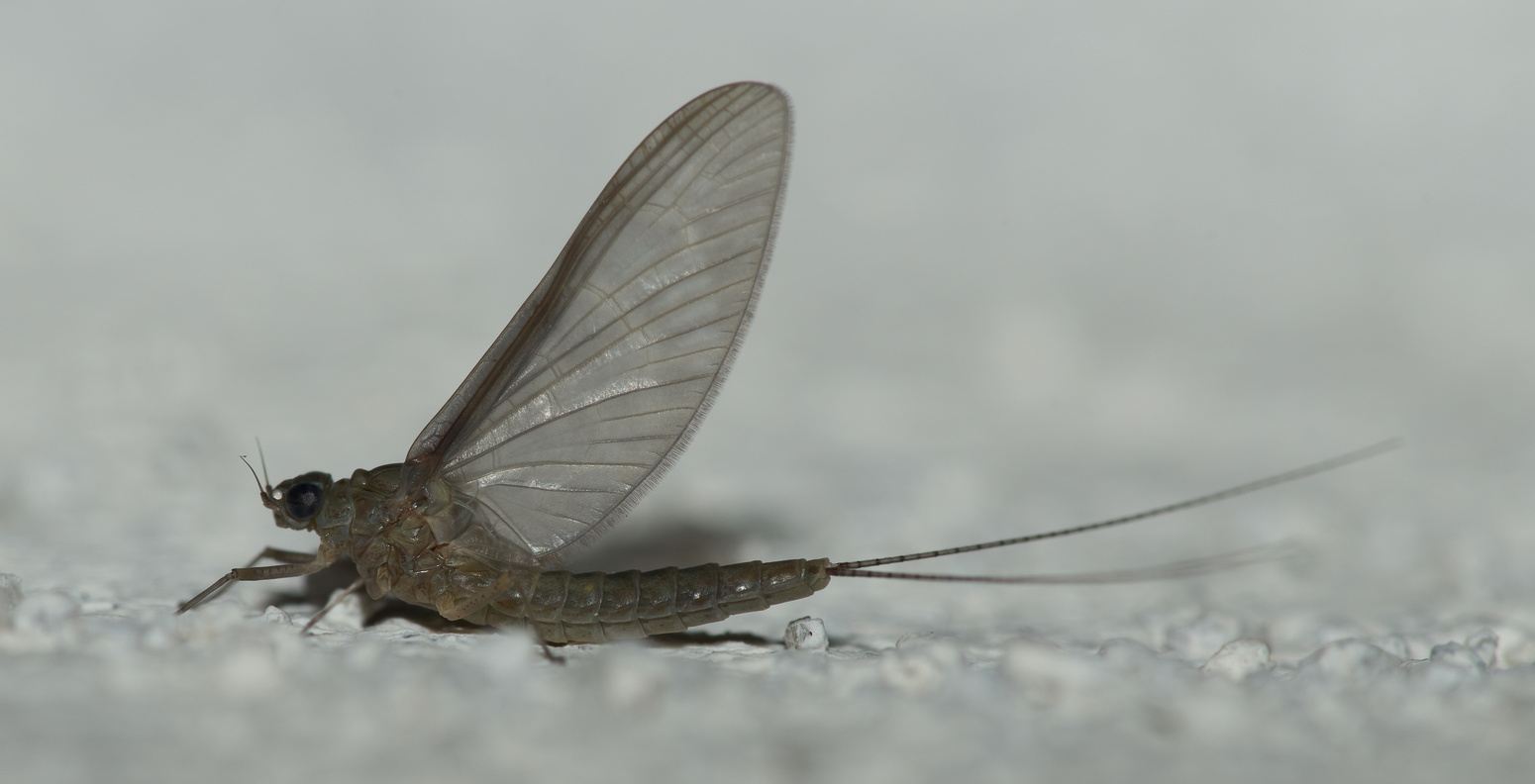 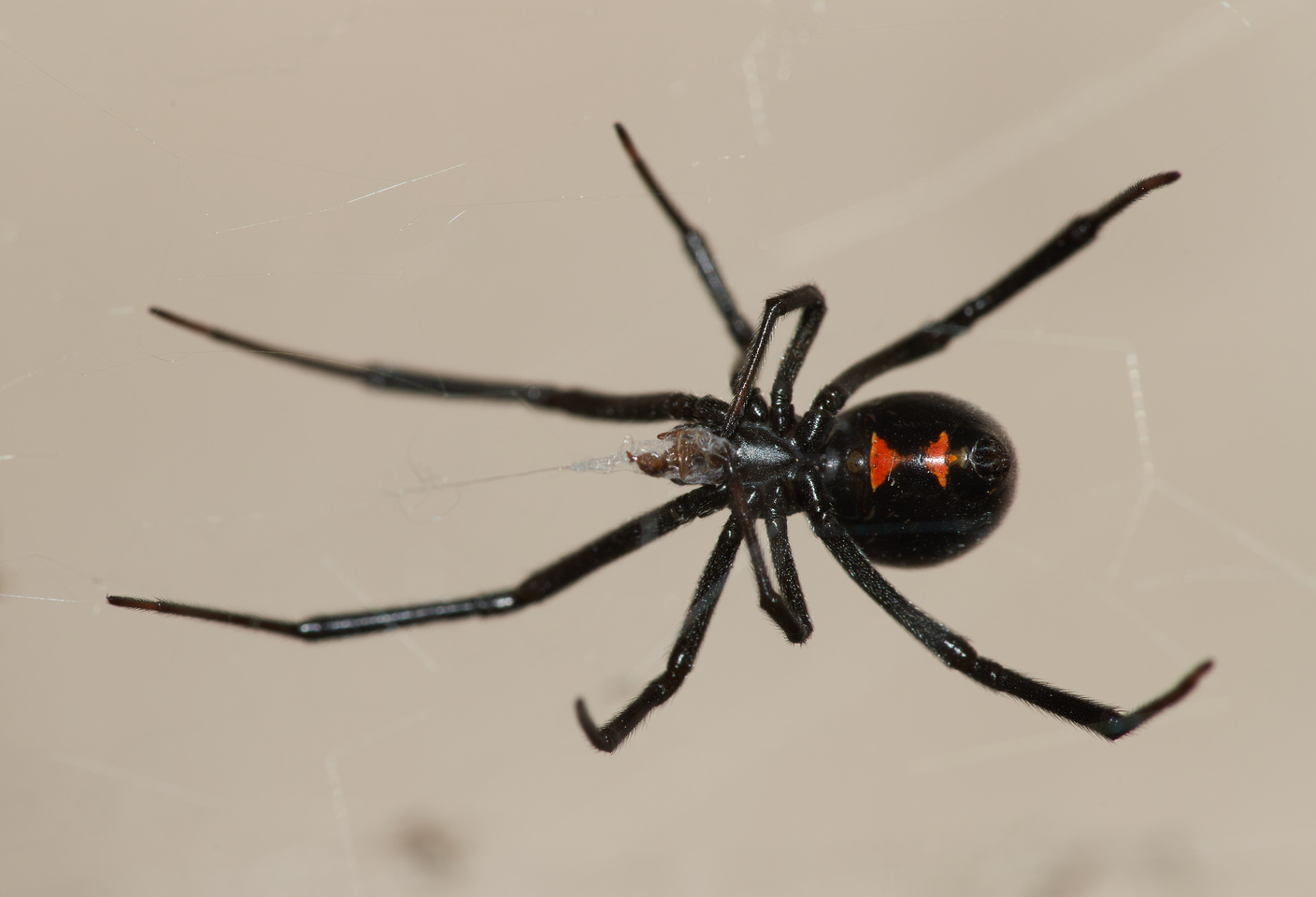 Gotta work a little harder before I can get some good moth shots, but I am getting close.
|
|
|
|
Moths are awesome. I need to spend more time exploring all the dark corners of town where some of the more exotic ones hide.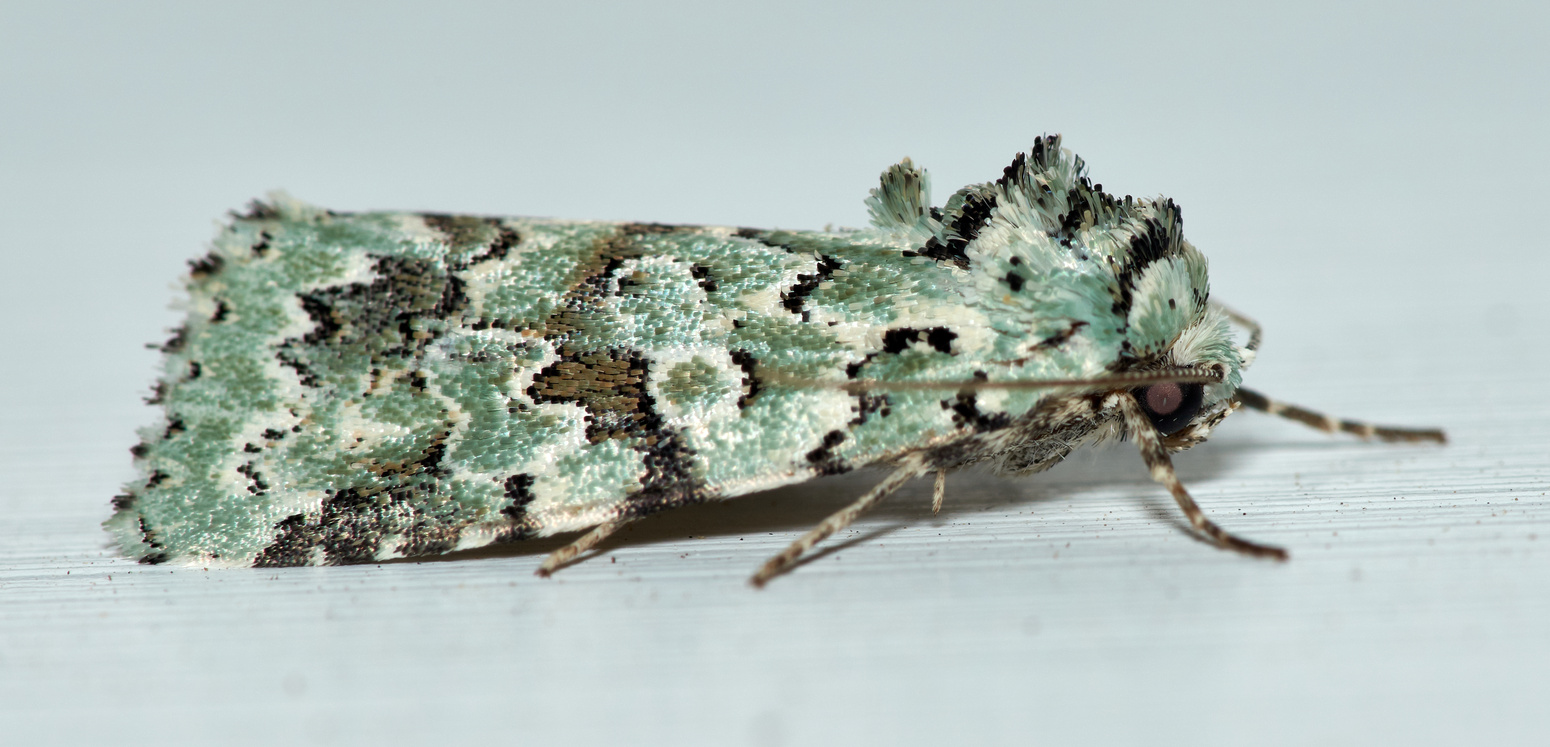 And these guys are awkward as poo poo. Almost like Michael Cera in insect form. 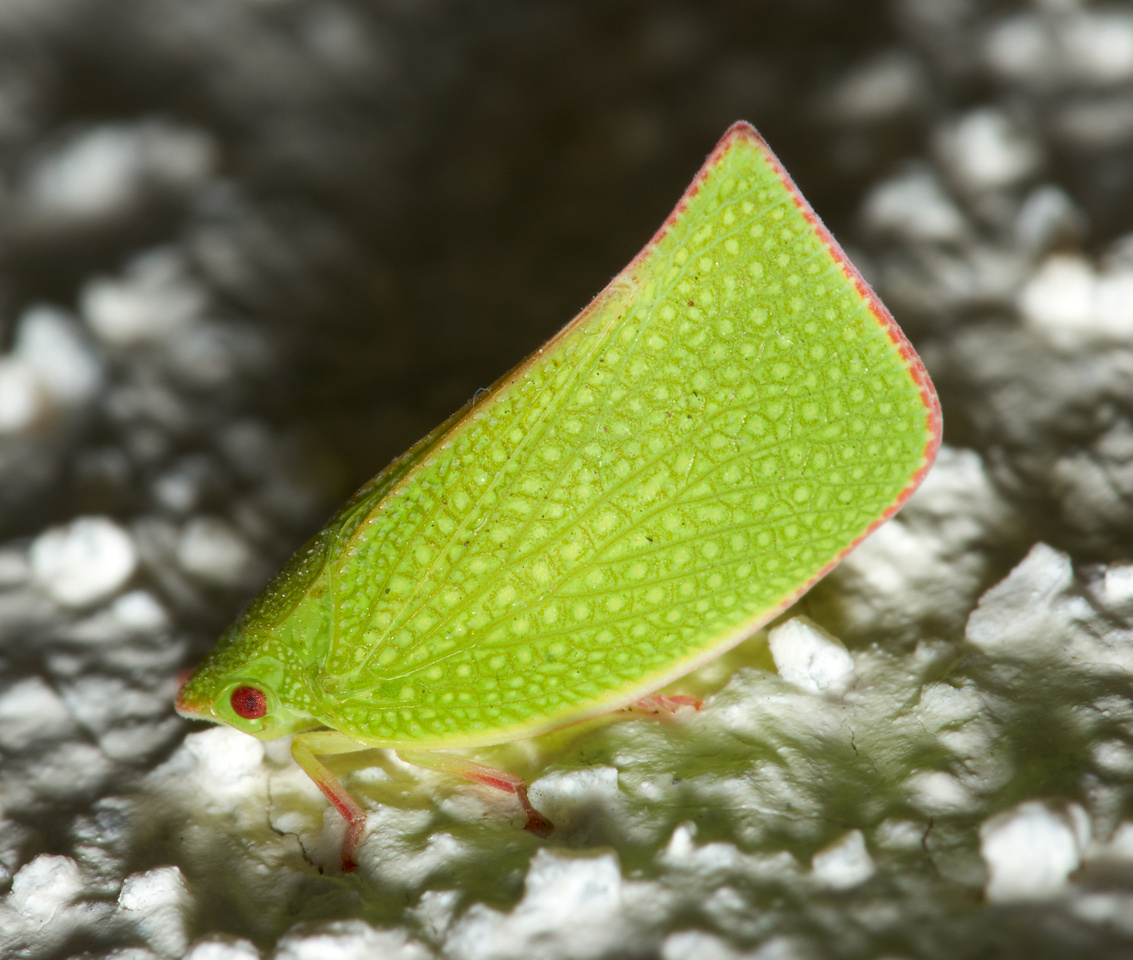
|
|
|
|
Graniteman posted:You're welcome. I just love this subject! I have to restrain myself if it ever comes up in conversation. Sorry for the late reply I've been on holiday. I setup the full new Laowa + AD200 rig this around July this year it was a basic swap from 100mm L or MP-65 with a Yongnuo flash. The full gear list is Canon 80D APS-C DSLR Laowa/Venus "Dreamer" f/2.8 100mm 1x-2x APO Macro lens. Godox AD200 Pro (the new one) with the EC200 extension cable. Godox XT1c Wireless Trigger SmallRig Cage for Canon 80D for mounting you can probably get away with a smaller, lighter accessory rail but I wanted flexibility) SmallRig small friction arm (with a hotshoe adapter) Customised softbox diffuser (with a few layers of 1/4 stop silk and some roscolux neutral diffuser paper replacing the diffusing material, trying to recreate the diffusion that guy that takes 3x MP-E65mm shots of bee faces with his MT-26ex uses) I also own the KX-800 and a few other flashes for comparison. I put the power unit in a tiny cycling backpack with the cable over my shoulder, honestly the setup is a little out there (what good macro setup doesn't feel a little 80's sci-fi?) but it works even if you feel like a ghostbuster you even have 3 switches to turn everything on (I like to say Do, Ray, Egon) The AD200 Pro gives me good exposures around 1/4600 flash with F/13 ISO 100 and 1/250 although it can also do high speed sync, if you want to raise the ISO the flash can do really fast speeds like 1/13,510 the readout out on the flash tells you the speed as well which is really nice. The weight is probably a wash compared with the KX800 (i'll set it up and weight it when I get a chance) as you surmise but the ergonomics are a little nicer, the lighter flash head and centrally weighted cage balance the camera a bit more, you also have your flash head adjustable position wise as compared to a straight up flash in hotshoe setup. The other nice thing is the insane recycle time on the AD200 it can shoot as fast as you want, which is nice when you are pushing the focal plane through the scene with high speed shooting enabled for that one frame with the right focus. Further to that, you can use the wireless to fire another flash if you want a fill somewhere else I'm considering another Godox flash on a small tripod I can put near where I'm shooting for some ambient up/back light. I've even tried putting the AX-800 on the hot-shoe on it and had 3 lights although this is pretty impractical I took a few shots with it. My fave shots with it this year are below, these are not big crops either, they are very printable at large sizes.  Honey Bee by Aves Lux, on Flickr (4200x2800) Honey Bee by Aves Lux, on Flickr (4200x2800) Hover Fly Pink by Aves Lux, on Flickr (3400x2700) Hover Fly Pink by Aves Lux, on Flickr (3400x2700) Pollen 3 by Aves Lux, on Flickr (4000x2700) Pollen 3 by Aves Lux, on Flickr (4000x2700)
jarlywarly fucked around with this message at 16:33 on Oct 21, 2019 |
|
|
|
I've been avoiding taking the time to update my gear description for years, but here's what I've been shooting for about 2 years. Macro equipment October 2019 Macro equipment October 2019This has been my macro setup for about two years, and is the culmination of a lot of iteration and conversations with other macro photographers. I feel that it gives me essentially everything I want from lighting, except that it is very heavy at 5 lbs. The concept is modeled on a beauty dish with light from large light sources both above and below. Iím using the Venus KX-800 twin flash. Itís just the most flexible and ideal macro flash Iíve ever used. I keep my canon twin flash for some focus stacking, but in the field I only use the venus. Iíve tried many, many diffusing media over the years and Iím most happy with this rosco gel. It is very transmissive, and very diffusive, and itís a tough, flexible, waterproof plastic. Thanks to the instructors at BugShot for recommending it to us! The upper diffuser is mounted to a very nice prototype media holder made by the folks at cognisys. It doesnít appear that it was ever put up for sale, but I have a more detailed photo you can see elsewhere in the flickr album if you want to make something like it yourself. I disassembled their media holder and mounted it to my own friction arm. The upper diffuser is large, sized to work with either the MP-E 65mm (very close working distance) or a 100mm macro (larger subjects further away). The lower flash head is triggered optically, and shoots through a flexible double-fold of Rosco Cinegel. The lower flash is used as a fill light to lift the shadows, but the lower cinegel is very flexible so I can press it right into foliage or against a tree and it will move freely out of the way. I can also point any of the three flash heads past the subject to light the background. The lower friction arm and flash contributes 1 lb (25% of the total weight). The use of the lower sheet of gel is inspired by Alex Wild who uses layers of flexible sheets on top of his lens (rather than below) to give him a flexible diffuser that he can press up against his ants on the ground. I flipped it upside down. Both friction arms (upper diffuser and lower flash head) are mounted to a CB Mini RC flash bracket. I have it on a tripod here to make it easier to photograph, but I shoot this setup freehand. ckground. The use of the lower sheet of gel is inspired by Alex Wild who uses layers of flexible sheets on top of his lens (rather than below) to give him a flexible diffuser that he can press up against his ants on the ground. I flipped it upside down. Here are recent examples that illustrate the light diffusion and specular highlights from three flash heads. The jumping spider isn't the best photo, but jumping spider eyes are the most challenging if you want to avoid multiple hot-spots.  Hanging Thief Robber Fly - Diogmites properans Hanging Thief Robber Fly - Diogmites properans Parasitoid wasp laying eggs in a caterpillar Parasitoid wasp laying eggs in a caterpillar  Carpentar ant carrying a caterpillar back to the nest Carpentar ant carrying a caterpillar back to the nest  20181031-HA4A1119.jpg 20181031-HA4A1119.jpgLike I said, it's heavy, and I may drop the lower flash to save my arm some pain. I've never seen another macro photographer do this trick of putting a friction arm upside down on a tripod mount to get another flash head on, and I felt pretty good about myself for having the idea. But man it's awkward and heavy. Graniteman fucked around with this message at 20:59 on Oct 24, 2019 |
|
|
|

|
| # ? May 16, 2024 11:10 |
|
That setup gets some nice light it's really smooth even and smooshes out the highlights It's just too bulky for me in the field, in the UK i'm photographing small fast moving insects. In my tests and sort of confirmed by your photos of your setup I found the rosco material is amazing if there's a decent gap and 2 layers between light and subject it needs scale to diffuse that well and I just can't make that work in the field.
|
|
|





















